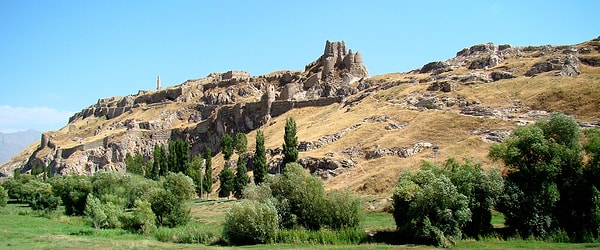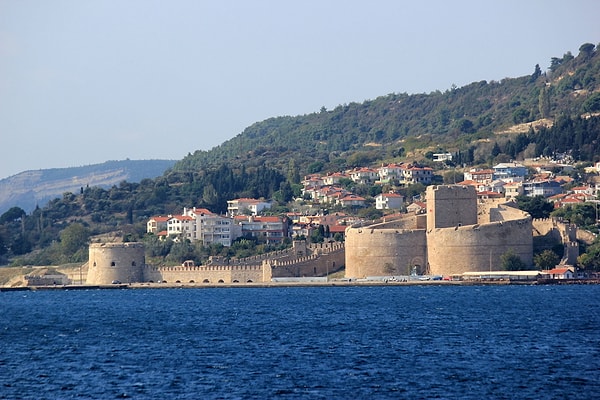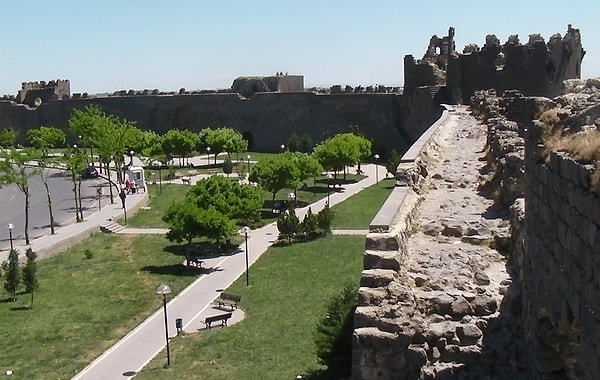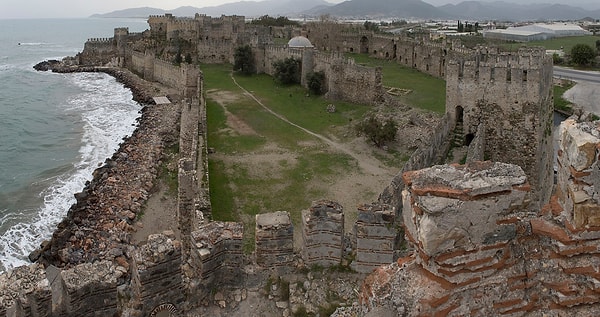Discover Turkey's Historical Castles: A Complete Guide
Due to its geographical location and long history, Turkey is home to countless castles bearing the traces of many civilisations. These castles are not only military defensive structures, but also living documents of Anatolia's cultural, architectural and historical heritage. In this article, we will explore some of Turkey's most well-known castles and take a step-by-step look at the traces of historical events, architectural details, restoration processes, how to reach the castles and what you can see during a visit. So, what are the most famous castles in Turkey? Where are the historical castles in Turkey? And how to visit historical castles in Turkey? Let's explore together 👇
1. Alanya Castle

History and Architectural Features
Alanya Castle was built by the Seljuk Sultan Alaeddin Keykubad I in the 13th century and contains elements from the Hellenistic, Roman, Byzantine, Seljuk and Ottoman periods. The castle is spread over an area of 10 hectares, surrounded by walls approximately 6.5 km long. In particular, the nearly 400 cisterns inside the castle show that the castle was designed not only for military defence but also to meet the need for water. The ruins of palaces, majestic towers and defensive walls in the inner castle area give visitors the atmosphere of the Middle Ages.
Visiting Tips and Transportation
Transportation: You can easily reach the castle from Alanya city centre both on foot (about 1 hour walking distance) and by cable car.
Entrance Fee: €12
Things to see: Cisterns in the inner castle, the ruins of Alaeddin Keykubad Palace, towers and walls; you can also enjoy panoramic views of the Mediterranean Sea from the castle.
2. Zilkale (Rize)

History and Location
Located in the Çamlıhemşin district of Rize, with an impressive view of the Fırtına Creek, Zilkale is a strategic observation castle built in the 14th or 15th century. The name of the castle is derived from the Turkish words “zil” (bell) and “kale”; it is also referred to as “Zirkale” in some sources. Consisting of 8 bastions and watchtowers, it offers a magnificent view of the surrounding mountains and valley thanks to its high altitude.
Transportation and Things to See
Transportation: You can reach Çamlıhemşin by car or minibus; it is also possible to join private guided nature trips to go to the castle.
Entrance Fee: 5 TL
Things to see: From the castle, you can enjoy the natural beauty of the surrounding mountains, the unique views combined with the flow of the Fırtına Creek, and examine the defence structures and bastions inside the castle in detail.
3. Van Castle

History and Architecture
Van Castle was built by the Urartian King Sarduri I in the 9th century BC. Located on the shores of Lake Van, the castle attracts attention with its rock tombs, inscriptions and walls from the Urartu period. The castle served as the protective fortress of the Urartian capital Tushpa for many years, and was subject to various repairs and restorations during the Byzantine, Seljuk and Ottoman periods.
Visiting and Transportation Information
Transportation: The castle, which is about 5 km from Van city centre, can be reached in a short time by car. Especially, buses in Van and taxis serve frequently in this region.
Entrance Fee: € 3
Things to see: The Urartian inscriptions inside the castle, rock tombs and the unique view of Lake Van are among the must-see elements.
4. Kilitbahir Castle

History, Restoration and Architectural Features
Kilitbahir Castle was built in 1462-1463 by Sultan Mehmet the Conqueror to prevent potential threats to Istanbul. Located at the narrowest point of the Dardanelles, the castle played a critical role in the defence of the strait thanks to its strategic location. Restoration and strengthening works were carried out during the reign of Suleiman the Magnificent, and additional repairs were carried out in the 18th and 19th centuries. The castle stands out with its 7-storey inner tower and thick stone walls planned in the shape of a three-leaf clover.
Transportation and Visiting Guide
Transportation: You can reach the castle by taking the ferry from Çanakkale city centre to Eceabat or by private car. Bus and minibus lines in the region can also be preferred.
Entrance Fee: 150 TL
Things to see: The inner tower, walls, moats and restored sections within the castle offer visitors detailed historical and architectural impressions. It is also an unforgettable experience to watch the unique view of the Dardanelles from the castle.
5. Diyarbakir Castle

History and Architectural Details
Diyarbakır Castle is known as one of the longest city walls in the world and represents a unique structure with its approximately 5.2 km long walls, 82 bastions and four main gates. With a history dating back to 3000 BC, the castle bears traces of the Assyrian, Urartian, Roman, Byzantine, Seljuk and Ottoman periods. A UNESCO World Heritage Site, this building carries the city's iconic historical texture to the present day.
Visiting and Transportation Information
Transportation: It is quite pleasant to reach the castle in Diyarbakır city centre on foot. It can also be reached in a short time by city public transportation.
Entrance Fee: € 3
Things to see: Along with the fortification walls, the reliefs on the bastions, the inner and outer castles, additional areas such as the Panorama Museum can also be visited to experience the historical atmosphere of the castle.
6. Mamure Castle

Historical Background and Architectural Features
Located in the Anamur district of Mersin, Mamure Castle is an impressive structure built by the Romans in the 3rd or 4th century AD and later repaired during the Seljuk, Byzantine, Karamanid and Ottoman periods. The castle covers an area of about 23,500 square meters and is surrounded by 39 towers, cisterns, mosques, baths and fortifications. The fact that it is surrounded by moats reveals how meticulously the defence strategy was planned.
Transportation and Attractions
Transportation: The castle, which is 6 km from Anamur district centre, can be easily reached by Mersin buses or minibuses.
Entrance Fee: € 3
Attractions: The mosque, baths, cisterns and towers in the castle are among the important elements that shed light on the history of the region. In addition, seeing the deep blue waters of the Mediterranean Sea from the castle is one of the most enjoyable moments of the visit.
Keşfet ile ziyaret ettiğin tüm kategorileri tek akışta gör!

Send Comment